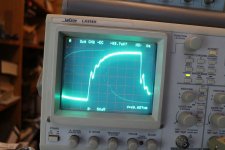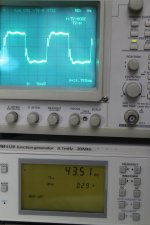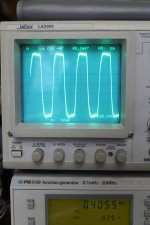Didn't I ask you/others first?
So, go ahead and start.
THx-RNMarsh
Siiiiiiiiiggggghhhhh, have we all devolved into pre-kindergarten levels of maturity?
"You said it first"
"Nuuhhh uhhhh"
Can we not play these games? All it does is add hundreds of useless posts and it's equivalent weight in frustration.
Siiiiiiiiiggggghhhhh, have we all devolved into pre-kindergarten levels of maturity?
"You said it first"
"Nuuhhh uhhhh"
Can we not play these games? All it does is add hundreds of useless posts and it's equivalent weight in frustration.
Pre-kindergarden? I think of it more like this

If you measure different things, you get different results. A corollary of this is that THD does not tell you everything you need to know. Who would have thought it?
Pre-kindergarden? I think of it more like this

More like this
An externally hosted image should be here but it was not working when we last tested it.
Siiiiiiiiiggggghhhhh, have we all devolved into pre-kindergarten levels of maturity?
"You said it first"
"Nuuhhh uhhhh"
Can we not play these games? All it does is add hundreds of useless posts and it's equivalent weight in frustration.
Uh Huh. still waiting. go ahead and start.
-RM
Here is yet another fundamental paper on amp distortion.
John, as usual, you are right on point. These are useful tests which show some high levels with certain tests... test sensitivities. More often those should be the ones used as they are well above the audible thresholds and would correlate to listening better. yes/no?
The circuit you posted a few back is using ac balancing to make the distortion of the + and of the - signal equal..... and thus minimal averaged. This too is on point with what I asked about earlier. Does it make a detectable difference. It could.
The emotional baby crying here from some good designers is a shame. I ask a question and get it turned back at me. what kind of non-sense is this here? Good designers or not ... "you're fired' 🙂
I'll add a really simple one to start -- high neg fb or low or no overall neg fb can both have extremely low levels of HD. But their output Z is or can be very different.... one low and one relatively high. That is one way they will sound different when connected up to speakers.
Next .... ? How about something more esoteric? Anyone? Waly? You still alive and kicking? here's your chance to contribute something interesting, I'm sure.
THx-RNMarsh
Last edited:
Here is a snippet of the Tom Holman preamp paper, referred to in post #1273 above.
_
Square waves are revealing. I was toying around with putting an LM3886 in a loop with a low distortion opamp, like in Scott's article, also looking at Bob Pease's article and the Neurochrome implementation.
It is possible to lower distortion that way, but a 40kHz square wave revealed behaviour I haven't seen before:

So what is happening here? It seems to be inherent to the topology. Neurochrome's, optimized implementation shows the following:

It looks like that when rise time exceeds a certain limit, it sets off an oscillation. I was thinking about propagation delay perhaps, but those seem to play out at an order of magnitude shorter in duration. I hope Scott or someone else can help me out here understanding this phenomenon.
Now, the other question I would like to bother you with is the following. My dead bug version more than halved distortion compared to a bare 3886, with no attempt at optimization. Neurochrome has measured distortion of just 0.00065%. So, there is a lot to gain in that field.
However. This is a picture of a bare LM3886 at 400 kHz, ten times faster than the other two measurements:

Question: Looking at these results, what is the best amplifier? The one with the lowest distortion, or the one that doesn't misbehave on high speed transients?
never heard of something like rise-time limitation?
You mean this is just normal overshoot behaviour combined with rise-time limitation?
no, I just meant you should limit the signals rise time by an external RC filter to a useful value. Testing an amp with out of band signals does not tell you much about its behaviour with in band signals.
You have some exponential RC time constant in the first circuit, do not you?
I have no notes left but will try to reconstruct the circuit from memory tomorrow. It is pretty close to the Groner/Polak opamp
Last edited:
Looks like conditional stability (those damped oscillations) or inductance track and RC filter response somewhere. You should have notes about your measurements, otherwise they are useless.
Or your scope probe is uncompensated. Have you calibrated it before measurement, by a calibrator square??
no, I just meant you should limit the signals rise time by an external RC filter to a useful value. Testing an amp with out of band signals does not tell you much about its behaviour with in band signals.
But it tells you a lot about potential problems. It is good NOT to limit the square rise time. The amp has to work it out.
Pavel,
Just monkeying around with a soldering iron on a Sunday afternoon. But its seems to be innate to a certain topology, that is what fooling around can be good for, to notice stuff like that.
Just monkeying around with a soldering iron on a Sunday afternoon. But its seems to be innate to a certain topology, that is what fooling around can be good for, to notice stuff like that.
Or your scope probe is uncompensated. Have you calibrated it before measurement, by a calibrator square??
Are you seriously asking?
- Status
- Not open for further replies.
- Home
- Member Areas
- The Lounge
- John Curl's Blowtorch preamplifier part III